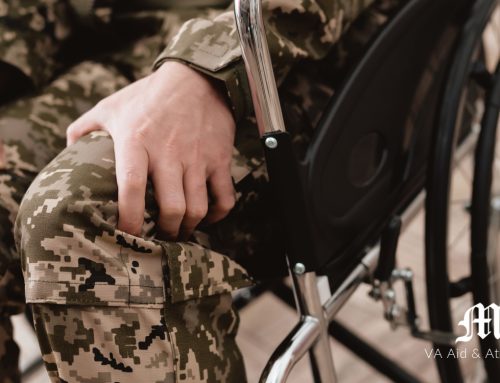Aid & Attendance | Our veterans served when our country needed them. As those same veterans age, they now need our country to come to their aid. The Veterans Aid and Attendance benefit is designed to financially assist eligible veterans, or their surviving spouses, who need the assistance of another person with the activities of daily living. Aid and Attendance is a monthly check that helps with the cost of in-home health care or staying in an assisted living facility.
Applying for government benefits can be a daunting task and a blizzard of forms, difficult for even the most organized person. Let’s take a broad look at the process and how an elder law attorney can help.
Determining Eligibility
The first hurdle is checking eligibility under the Department of Veteran Affairs guidelines. First, the veteran must meet requirements for age (65 or older) and service (minimum 90 consecutive days of active duty with at least one day during a recognized period of wartime, with a better-than-dishonorable discharge status).
Next, the veteran must show he needs assistance with at least two of the activities of daily living (bathing, toileting, dressing, meal preparation, needs protective living environment, for example). This requires a form to be filled out by the claimant’s regular physician, and forms from an ALF or home caregiver, depending on circumstances.
Then there are income and asset guidelines. This is where the process gets murky for people and a VA-accredited attorney can help. The eligibility standards for surviving spouses varies a bit (marriage requirement), so visit the VA’s website or consult an attorney for details.
Homework
In addition to the physician forms mentioned above, the VA application entails multiple forms that serve specific purposes. The veteran application form differs from the one that a surviving spouse would use. Your situation will dictate which forms are necessary. Again, an attorney’s office can guide you.
Be prepared to gather statements from financial institutions (banks, investment accounts, IRAs, annuities) and personal history documents (discharge papers, birth certificates, IDs, Social Security letters, marriage certificates, divorce decrees, among others).
Filling Out and Submitting the Application
Sitting down to fill out the various forms is time-consuming, and sometimes confusing. Put supporting documents and evidence with the appropriate forms, and fill in as many blanks as possible on each form. Put the VA form 21-4138 Support of Claim in front and make sure to sign and date in all the proper places.
Once you’re done, you can either mail the submission, fax it, or file it electronically through the VA’s website.
Next, be prepared to wait. The VA will acknowledge the claim has been received, then it may be quite some time before you hear from them again. You may receive a “development letter” if the VA requires additional information or documentation. Or, you may receive a denial letter listing the reasons the application was denied. From there you can supply the requested evidence or appeal. And finally, when approved, you will receive a check retroactive to the month after your eligibility, then you will receive monthly checks thereafter.
At Mortellaro Law, we have assisted veterans and their families with the VA Aid and Attendance process for more than 10 years. Call us for a free initial consultation to see if you are eligible for this important benefit.





